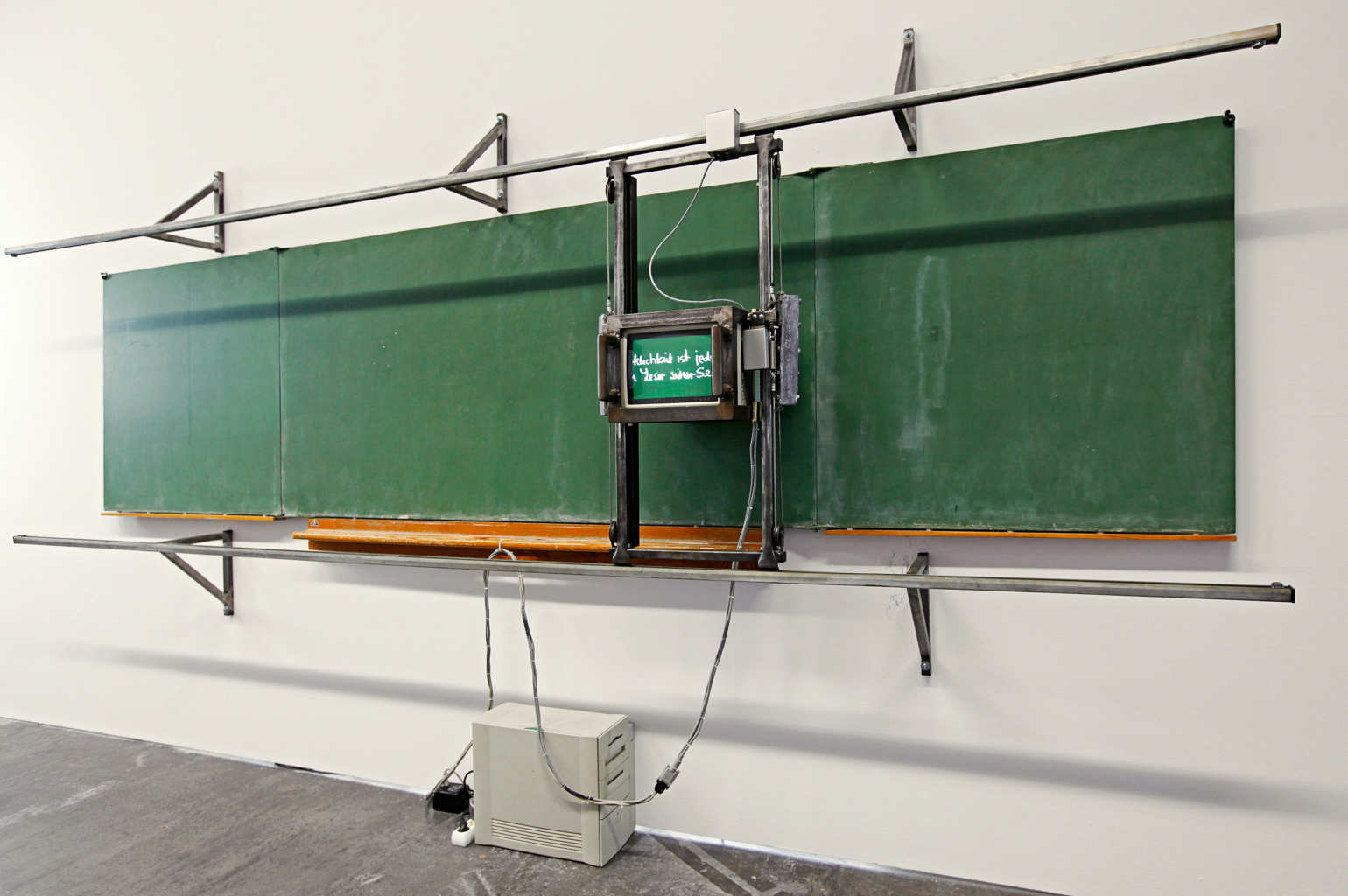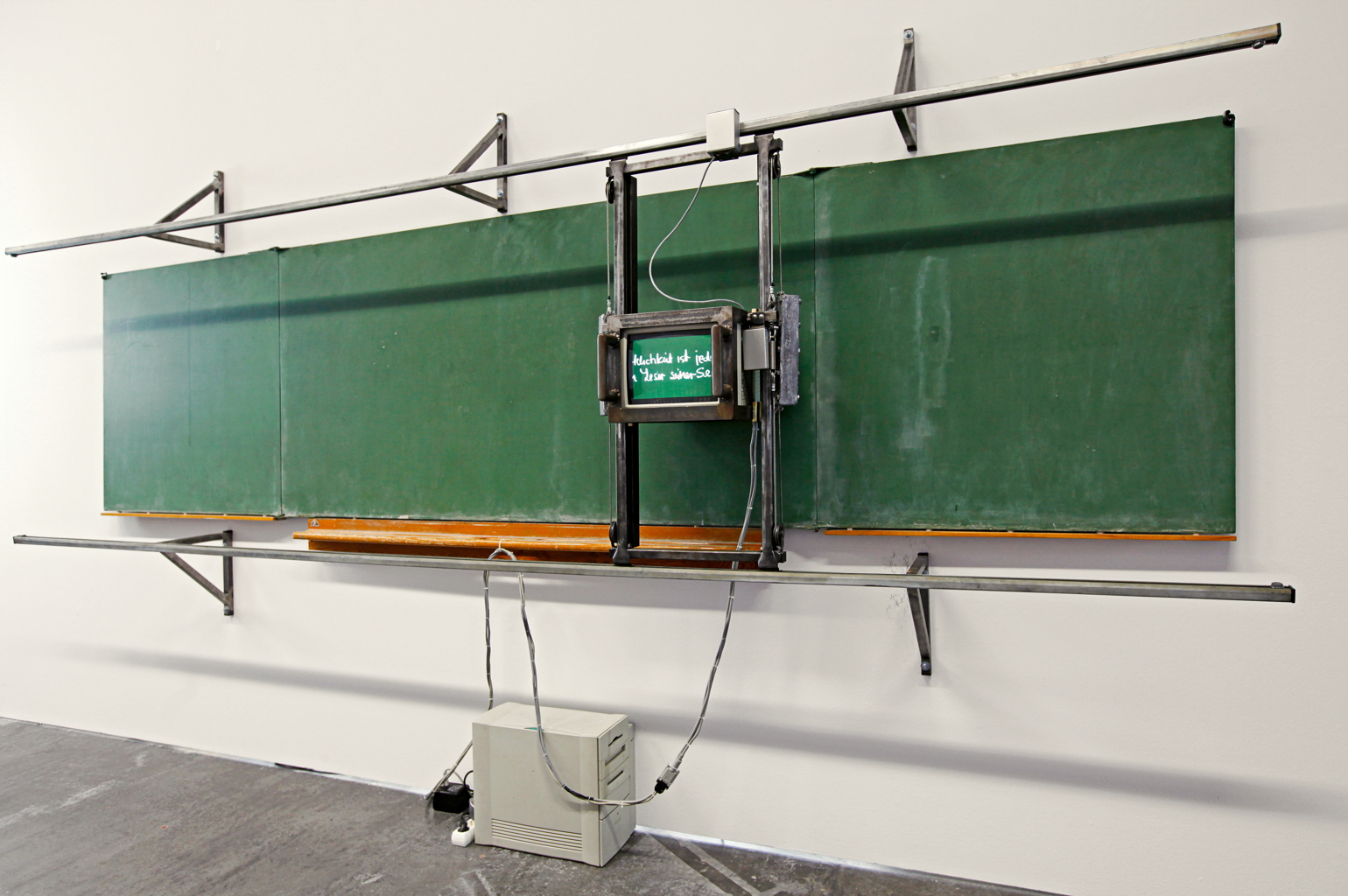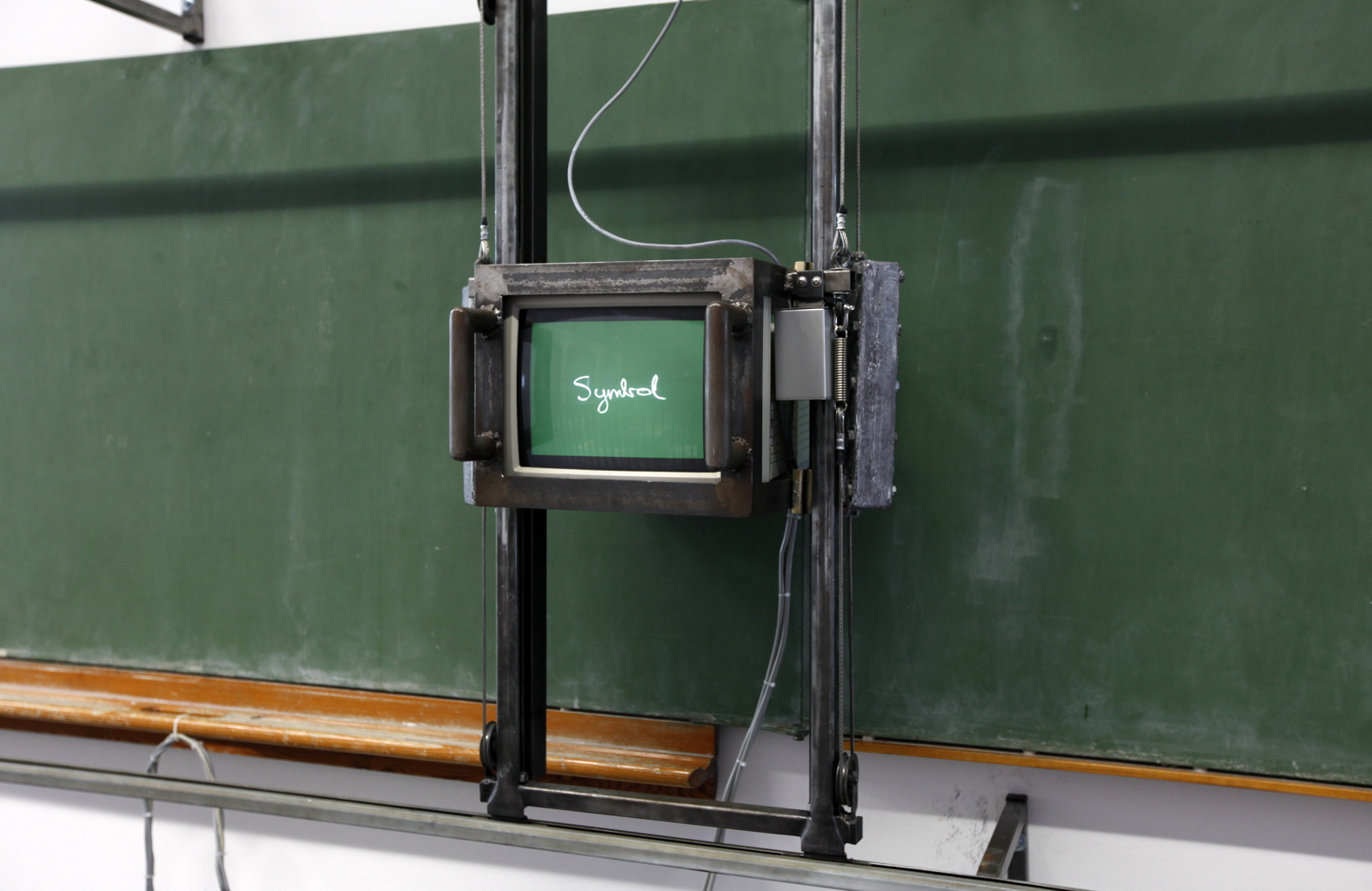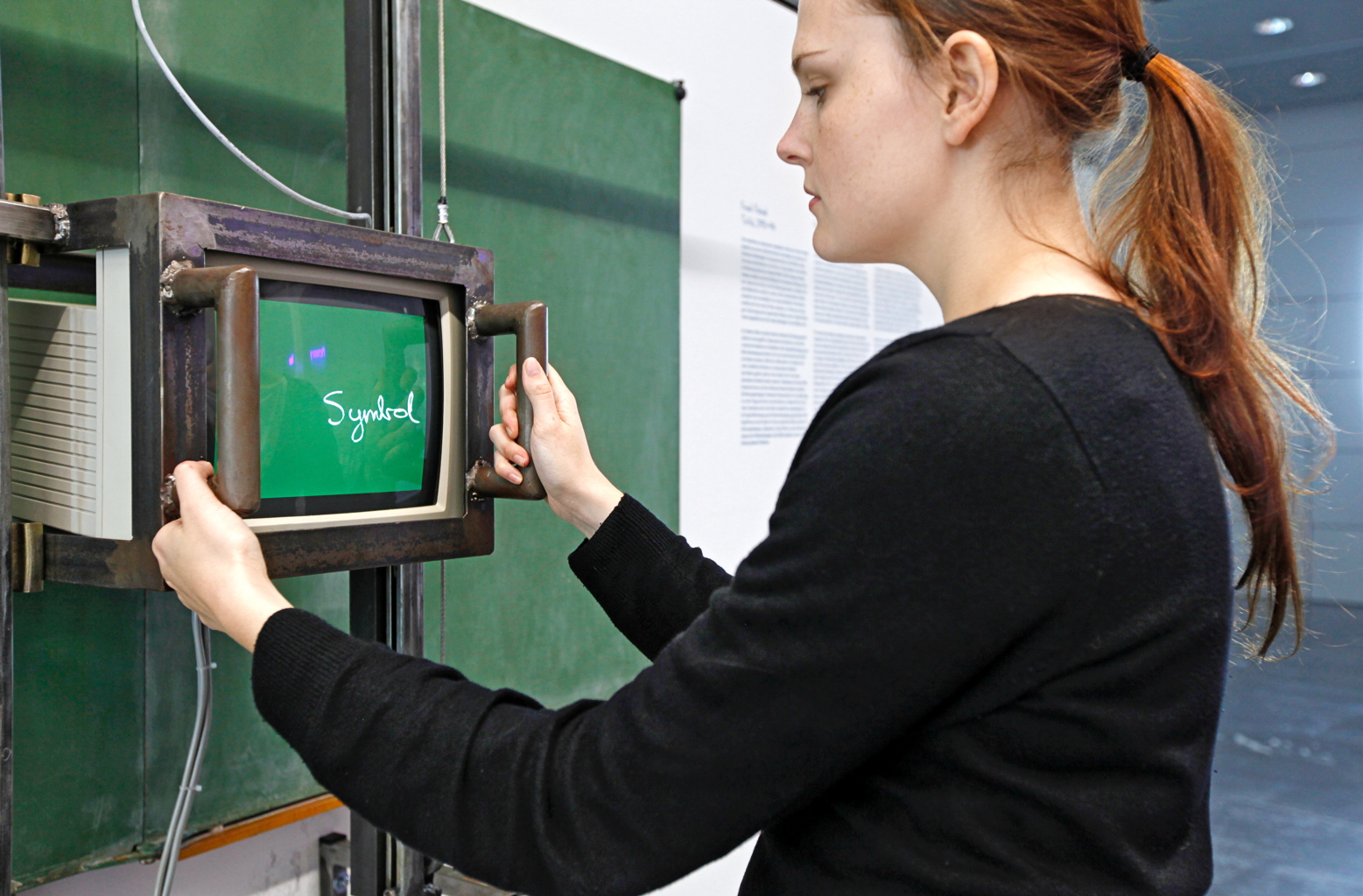Frank Fietzek
Die Tafel
1993
- Artist / Artist group
- Frank Fietzek
- Title
- Die Tafel
- Year
- 1993
- Category
- Computer-based
- Installation
- Material / Technique
- interactive computer-based installation; green chalkboard with movable monitor (Apple) on a rail system (steel, counterweights); technical equipment: computer: Power Mac G3, operating system: OS9.2, software: Individual software, further devices: modified mouse for motion detection
- Dimensions / Duration
- 110 x 500 x 50 cm
- Description
- »Tafel« [Blackboard] by German artist Frank Fietzek is a computer-based interactive sculpture, which was developed at the ZKM | Karlsruhe, that addresses the relationship between memory, text conservation, and digital storage. In front of a green chalkboard, as are utilized in schools, is a monitor mounted on rails which can be moved horizontally and vertically. The chalkboard on the wall, whose writing and scribblings can normally not be restored, is empty save for a few traces of chalk left by a sponge after cleaning. When the monitor is moved along the chalkboard, words and sentences appear on the monitor on the subjects of ’memory’, ’text’ and ’image’. These were written on the board, photographed, filmed, and afterwards wiped off, so that they only continue to exist in the ’virtual memory’, or on the computer’s storage disk. This computer is located beneath the board, and is connected to the monitor. Selected by a random principle, the computer continually reassigns new positions to the stored terms on the chalkboard. In this way, a word already selected can resurface in another place. The use of writing boards or tablets, which dates back to ancient times, is contextualized with contemporary technological innovations, and this visualizes how dealing with the textualization and the storage of information has changed. Comparable with a palimpsest – a page from a manuscript, whose content has been scraped off or washed off, and then written on again – the board bears traces of what has been overwritten. This information has not been erased irreversibly; unlike in the digital world, this information can be restored retroactively, so that historical overlapping can occur. Fitzek’s »Tafel« can also be understood as metaphor for the human memory process: the specific visualization of information, the overwriting of these individual memories, and the traces of chalk as a hint of things long forgotten, are made visually experienceable for the visitors.
Author
Katharina
Oberle



